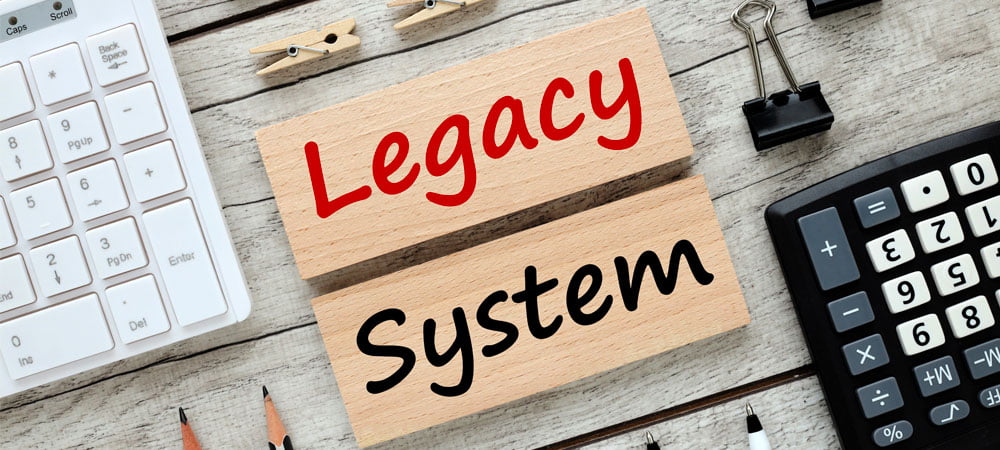Legacy IT cost trap


In total, 61% confirm that legacy modernization is "very important" or "important". However, only one in ten companies has already completed the most important modernization projects. This is according to the study "Legacy Modernization 2022", which was conducted among 339 IT managers from Germany, Austria and Switzerland. Study partner Workday explains why companies should not hesitate when it comes to modernization.
According to the results, companies are approaching modernization at different speeds - just under a quarter of companies plan to modernize their existing systems next year, while 38 percent intend to do so in the near future (1 to 3 years). "Legacy systems with monolithic on-premises software and manual processes make it difficult for companies to take a more active approach to digitalization." Jens Löhmar, Chief Technology Officer at Workday for the DACH region and continental Europe, points out. At the moment, companies are only moderately satisfied with their current IT infrastructure.

For half of the IT managers surveyed, a driver for legacy modernization is better adaptation of business processes and increased security requirements (47.5%). Pressure for rapid modernization tends to come from management or the IT departments themselves. The companies surveyed would like to have an IT infrastructure that is more agile, innovative and digital. Legacy systems are more expensive to maintain and operate. In 44% of the companies surveyed, at least half of the legacy systems have been in use for a long time. In 59% of companies, the cost of maintaining and operating legacy systems is higher than that of current solutions. Of these, smaller companies with up to 249 employees in particular complain about significantly higher costs. In the past, companies have not only invested a lot of budget, but also in the deployment of personnel for the introduction of IT systems.
In many cases, this also involves the individual adaptation of company processes. Tailor-made IT adaptations outside of standards cause additional effort in terms of maintenance and modifications to support and upgrade processes. "Customizing often leads to a cost trap"explains Löhmar. "Companies with a high level of customization in their IT infrastructure are delaying the successful implementation of the transformation by sticking to legacy IT. In our experience, configurable standard processes are the better alternative in many cases, especially if there are few unique selling points across different sectors - such as the onboarding process in HR."
Integration and flexibility
According to the study, large companies with more than 1000 employees are the pioneers in IT modernization in the DACH region. "There is a pent-up demand for flexible IT systems in Germany, Austria and Switzerland," says Löhmar. "An integrated approach is needed, because digital transformation is a complex challenge. It is therefore worth tackling the replacement of traditional legacy systems as early as possible." This is also the view of the IT managers surveyed: 49% of companies are "very satisfied" or "satisfied" with their modernization projects to date. Statements such as "becoming faster" or "faster implementation" predominate, with the vast majority of respondents taking a strategic approach to the modernization of existing systems.
37% of companies have a comprehensive overall strategy for corporate transformation, and almost as many have a data strategy. Löhmar also confirms this: "Many companies have neglected their strategic planning during the pandemic. They are finding it difficult to break down or merge data silos. Instead, considerable amounts of data from different systems are being processed and prepared at great expense, which in turn has a negative impact on data quality, timeliness and availability."
The most important methods for modernizing IT are virtualization, the expansion of existing applications with new (micro) services and data conversion. In most companies, the internal IT department implements the modernization of applications itself or commissions an in-house service provider (36%). Only 18% commission an external service provider - among external partners, cloud providers (41%) are in the lead, especially among large companies with 1,000 or more employees.
Löhmar advises understanding the change in IT architecture as an ongoing process: "It pays to tackle the replacement of traditional legacy systems as early as possible and to see it as a continuous process. The first important step is to create transparency in the architecture and the applications used. SaaS standards have already been established in many domains, such as Finance or HR. In further steps, these domains can be decoupled from a monolithic ERP system and operated as a SaaS application. A domain-oriented IT landscape enables organizational agility within the business areas and can better accommodate adaptation to new requirements. In this way, dependency on outdated legacy systems can be reduced step by step. This can reduce data silos and enable shorter planning, execution and analysis cycles, which is an important basis for faster and better decision-making processes."







